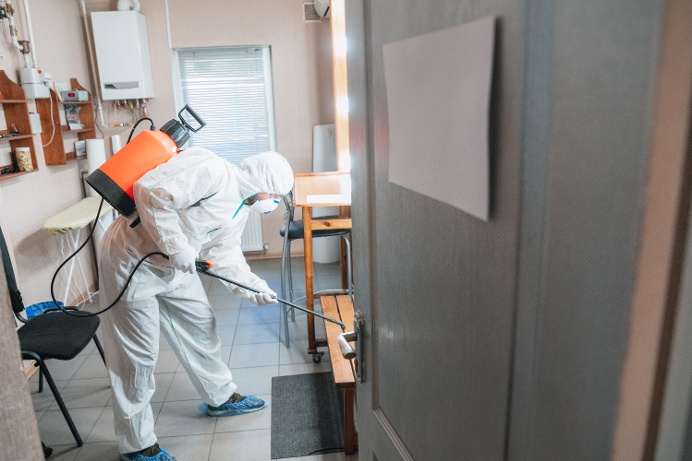Within the US federal government, the Department of Justice (DOJ) enforces many civil and criminal laws directly, and also provides the attorneys who represent federal agencies in enforcement cases. For example, DOJ’s “US attorneys” represent the Environmental Protection Agency (EPA) in cases under the Clean Air Act, Clean Water Act, etc. In doing so, DOJ provides those attorneys with departmental policies to guide their activities – as a practical matter, DOJ policies supersede any conflicting client-agency policies. It’s therefore important, that since the Biden administration assumed office, Attorney General Garland and his deputies have moved aggressively to review and revise departmental policies inherited from the Trump administration. The remainder of this note discusses some of these changes.
Read MoreAudit, Compliance and Risk Blog
Tags: EPA, DOJ, Environment, ENRD, Climate
On April 30, 2021, the US Environmental Protection Agency (EPA) proposed rules to phase down production and consumption of specified hydrochlorofluorocarbons (HFCs), consistent with directives included in the 2016 Kigali Amendment to the United Nations-sponsored Montreal Protocol on Substances that Deplete the Ozone Layer. These rules were authorized by the massive coronavirus relief bill (American Innovation and Manufacturing Act of 2020 (AIM Act)) enacted in December 2020, which included dozens of unrelated provisions within its 5,593 pages.
Read More
Tags: EPA, climate change, Environment, HFCs, Montreal Protocol, Ozone Layer, AIM Act, ODS
EPA Revises Multi-Sector General Permit For Industrial Stormwater Discharges
Posted by Jon Elliott on Wed, May 05, 2021
Effective March 1, 2021, the Environmental Protection Agency (EPA) has issued a revised “National Pollutant Discharge Elimination System (NPDES) Multi-Sector General Permit for Discharges from industrial Activities” (MSGP).” This new 2021 MSGP replaces EPA’s 2015 MSGP (which expired in 2020 but was continued by administrative fiat). Compliance begins May 30, 2021 for facilities that have been subject to the 2015 MSGP. Even though EPA's direct permit authority applies only in limited parts of the country, the new MSGP provides a reminder to organizations nationwide that stormwater management efforts need to be thorough and up-to-date.
Read More
Tags: EPA, Stormwater, clean water, NPDES, Environment, MSGP
Do you check for mold when reopening after COVID lockouts?
Posted by Jon Elliott on Wed, Apr 14, 2021
As vaccinations begin to bring the COVID-19 pandemic under control, more employers are moving to reoccupy and reopen workplace areas, many of which have been closed for months. During those times, residual moisture from reduced space conditioning or under-maintained facilities may have increased the possibility of mold infestations, which might endanger people returning to your workplace. This risk makes it a good time to review basic approaches to mold remediation. The remainder of this note reviews guidance from the US Centers for Disease Control and Prevention (CDC), Occupational Safety and Health Administration (OSHA), and Environmental Protection Agency (EPA).
Read More
Tags: EPA, mold, Coronavirus, CDC, Covid-19
EPA estimates that hundreds of thousands of diesel trucks have been modified to defeat Clean Air Act emission limits
Posted by Jon Elliott on Mon, Jan 25, 2021
The Clean Air Act (CAA) authorizes the Environmental Protection Agency (EPA) to set emission standards for motor vehicles and engines. Although the primary focus is on Corporate Average Fuel Economy (CAFÉ) standards for new vehicles, set jointly by EPA and the Department of Transportation’s (DOT’s) National Highway Traffic Safety Administration (NHTSA) (I’ve discussed ongoing disputes about the latest CAFÉ standards several times, including HERE), EPA and states also have authority over post-sale “aftermarket” equipment and modifications to vehicles.
Read MoreThe Environmental Protection Agency (EPA) has completed a long review, and reaffirmed the primary National Ambient Air Quality Standards (NAAQS) for particulate matter (PM), including those for PM-10 (particulates with an aerodynamic diameter less than or equal to 10 microns) and PM-2.5 (less than or equal to 2.5 microns; also call “fines”). On December 4, EPA announced it would retain the PM standards set in 2013, despite comments presenting recent scientific evidence – including evidence that higher pollution levels exacerbate harm from COVID-19 -- and seeking tighter standards.
Read More
Tags: EPA, CAA, Environment, NAAQS
During President Trump’s term, the Environmental Protection Agency (EPA) has taken a number of steps to narrow benefit-cost analyses (BCAs), reversing expansive approaches used during the Obama Administration and thereby reducing the calculated benefits of environmental and health regulations. EPA announced what will probably be the last such step on December 4, by adopting a new Part 83 in Title 40 of the Code of Federal Regulations (CFR) entitled “Increasing Consistency and Transparency in Considering Benefits and Costs in Clean Air Act Rulemaking Process.” (I wrote about less formal guidance in a May 2019 memorandum from EPA Administrator Wheeler to his Assistant Administrators HERE.)
Read More
Tags: EPA, CAA, Environment, BCA
EPA adopts rules for hazardous air pollutant sources to reclassify from “major” to “area” using administrative controls
Posted by Jon Elliott on Tue, Dec 08, 2020
The Clean Air Act (CAA) directs the Environmental Protection Agency (EPA) to define “hazardous air pollutants (HAPs)” that may pose acute health hazards, and to impose regulations to reduce those hazards. EPA requires permits for “major sources” of HAPs based on “Maximum Achievable Control Technologies (MACT),” and lesser controls for non-major “area sources.” During President Trump’s term, EPA has pursued several initiatives to make it easier for sources to reclassify from “major” to “area” in order to reduce their regulatory responsibilities.
Read MoreCalifornia Adopts Universal Wastes Rules For Photovoltaics
Posted by Jon Elliott on Mon, Nov 23, 2020
California’s Department of Toxic Substances Control (DTSC) established waste management rules for solar photovoltaic (PV) modules, to become effective on January 1, 2021. These rules are adopted under the state Hazardous Waste Control Law (HWCL), applying “universal waste” authority permissible under the federal Resource Conservation and Recovery Act (RCRA) and Environmental Protection Agency (EPA) RCRA regulations. EPA defines five universal waste categories, and also allows states to define additional categories (I wrote about this HERE). The remainder of today’s blog summarizes these universal waste PV requirements (which include dozens of revisions to proposed state rules I discussed HERE).
Read MoreTags: EPA, RCRA, Environment, HWCL, Photovoltaics, DTSC, PV Wastes
EPA revises regulatory methodology for determining whether source modifications trigger “new” source review
Posted by Jon Elliott on Mon, Nov 02, 2020
When are changes to an existing system so extensive that they produce a “new” system? This question is conceptually important in any evolving organization, and can have important regulatory consequences if requirements for “existing” systems are substantially different than those for “new” systems. Emissions regulations under the Clean Air Act (CAA) contain many such situations, and on October 22 the US Environmental Protection Agency (EPA) adopted changes to the “project emissions accounting” it uses to decide whether modifications to an existing major source are so extensive as to trigger preconstruction New Source Review (NSR) requirements. This revision codifies into regulations a policy changed announced in 2018.
Read MoreTags: EPA, CAA, Environment, PSD, NSR










